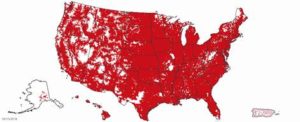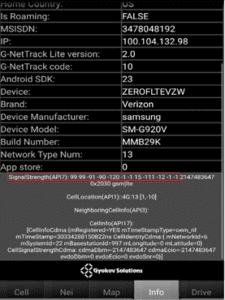The two most common questions that arise when we begin discussing cellular out-of-band is reception and security. Today we’ll be covering cellular reception which is absolutely critical to maintaining a good connection to providing OOB access during network outages. RSSI (Received Signal Strength Indicator) is the measurement we rely on to determine the strength of a signal of the client to the access point (Opengear Cellular device to Cellular tower). It is based on a value from -100 to 0. In this case, the closer we get to zero the better signal, unfortunately, that concept doesn’t apply to college exams. We’ll touch upon a few of these factors that can affect RSSI and your deployment and also ways to overcome them.
Location, location, and location
Today’s scenario is a typical datacenter environment in a basement of company headquarters. You’ll find the Opengear devices sitting on top of racks and cabinets surrounded by a variety of network equipment, power supplies, and cabling. Unfortunately, this exact environment has a few factors that can adversely affect your cell reception, especially if the signal from the cell tower is poor to begin with.
The various devices that sit in that datacenter emit RFI (radio frequency interference) that can disrupt cellular connectivity. If you have unshielded or poor quality cables this can also contribute to additional “noise” that can emit RFI. Unfortunately, other than replacing shielded cables not much can be done since most of the equipment in a datacenter are necessary to maintain company operations.
Common building materials can also contribute to poor cellular reception. Materials like aluminum, steel, and concrete are common materials that can prevent signal penetration. But in environments such as high-security buildings, they can be purpose built to prevent any type of signals from penetrating the building both in or out.
Finally, the location of the cell tower can also affect your overall cell reception. Simply put you will achieve a lower cell signal the further away the cell tower is from your location. However, with improvements and investment in cellular technology by carriers, this has led to a great increase in coverage either by building new cell towers or improving the technology for better range and penetration.

Verizon Coverage Map
Can you see me now?
While there are many factors that prevent quality cell reception there are simple ways to overcome these obstacles. The placement of a high gain antenna with an unobstructed view combined with a low loss, high-density shielded cable can overcome most of these challenges. This allows you to install the Opengear appliance as intended without the need of relocating the device.
If signal strength is still weak after using a high gain antenna, another option is to increase cellular signal strength using a 3G or 4G/LTE signal booster. The booster will then take the existing cellular signal and amplify it to the either the device location or where the high gain antenna is located. These signal boosters are very flexible and can be mounted either indoors or outdoors.
How do you prepare?
For those looking to build or migrate to a cellular OOB solution, there are few things that can be done before deployment. We do recommend a preliminary site survey to determine if a usable RSSI signal is available before deciding on cellular OOB. Free applications such as G-Net Track or OpenSignal (available both Android and iOS) can give you an idea of how your Opengear might perform. We also recommend proof of concept (POC) for larger deployments to ensure your satisfaction of the Opengear solution.

If you have any questions or would be interested in doing a POC please contact us here.


